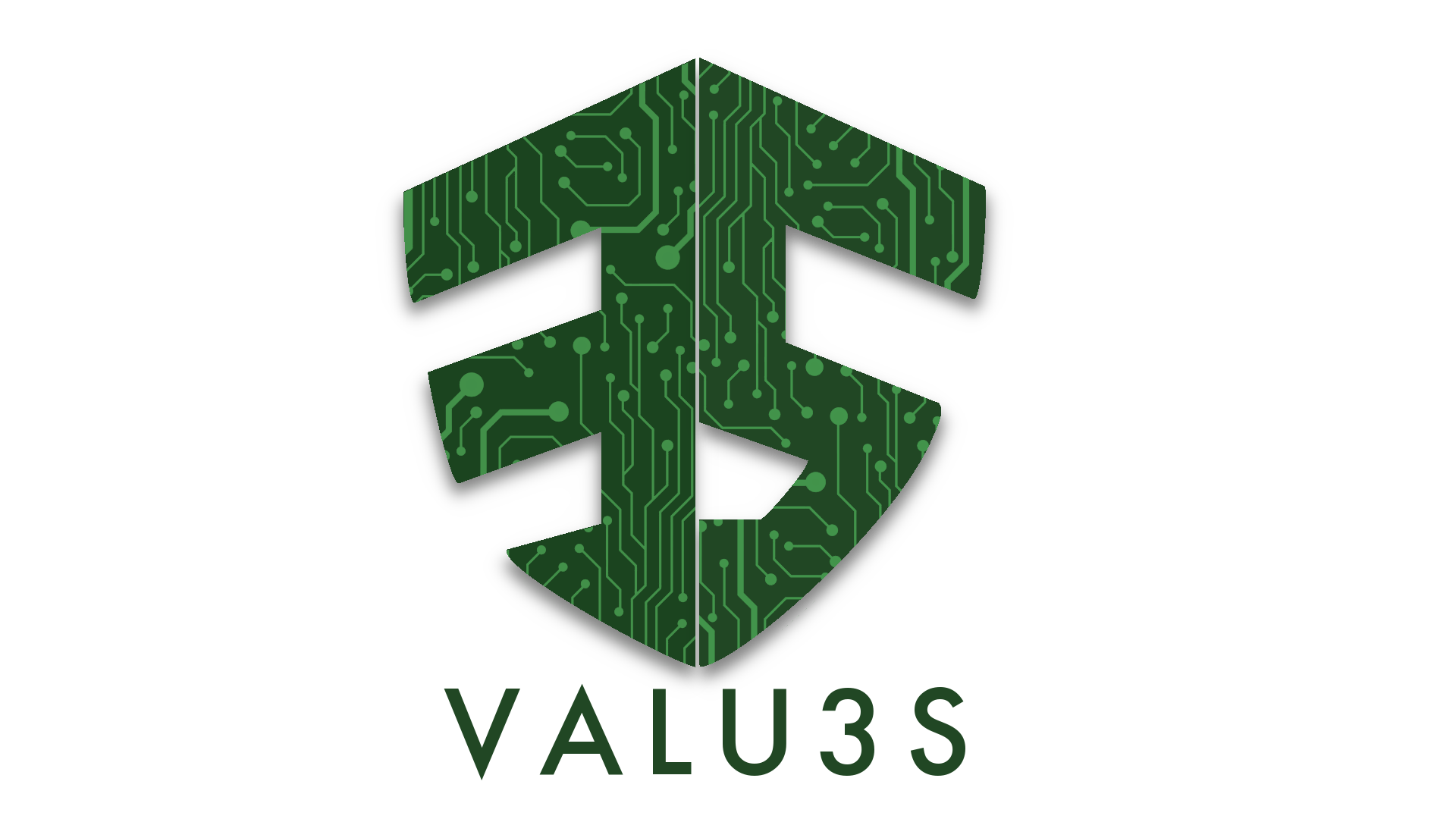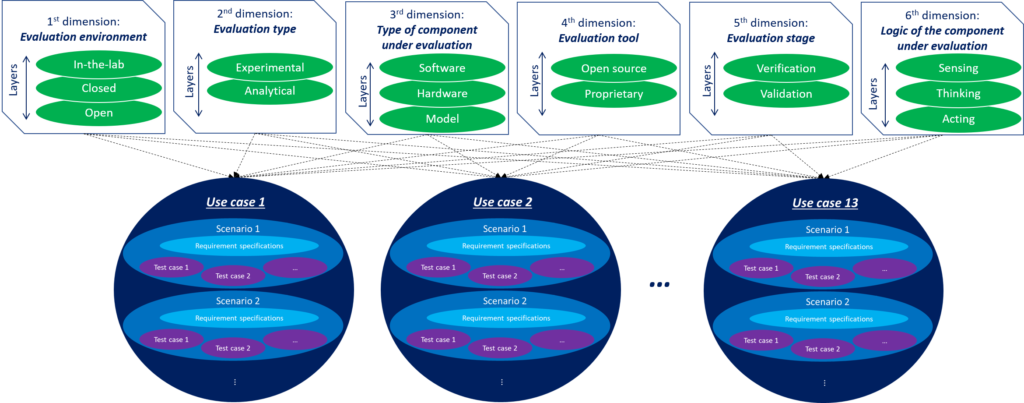
Description of work packages
WP1: Use case instantiation & evaluation scenario creation
The main objective of the first work package in VALU3S is to gain insight into the evaluation scenarios for the various VALU3S use cases. For that, the VALU3S use cases will be detailed out and their evaluation scenarios derived in Task 1.1. These scenarios are a high-level classification of the underlying test requirements, which are grouped depending on their type such as functional, performance, safety, cyber-security and privacy, and will create VALU3S’s repository of evaluation scenarios. In order to gather the scenarios, interviews with stakeholders in different domains on scenarios that are commonly used in their fields are planned. Also, the use case owners will provide scenarios based on their domain knowledge. The second objective in WP1 consists in producing the detailed descriptions of the evaluation scenarios and the derivation of respective test requirements in Task 1.2. These requirements are the basis against which the systems will be verified during design and validated after implementation. Finally, with the insight of Tasks 1.1. and 1.2, the final objective of WP1 is to take the repository of scenarios and evaluate in Task 1.3 across domains the use cases, evaluation scenarios, and SCP requirements.
WP2: Multi-dimensional layered framework for verification and validation of automated systems

The main objective of this work package is to create a multi-dimensional layered framework for V&V of automated systems with respect to SCP requirements. The framework is planned to be created and evaluated according to the standards that address V&V concepts within the domains of the use cases defined in WP1. Moreover, a gap analysis is conducted to provide suggestions and recommendations to extend the guidelines provided by different standards. The framework will be represented as a web-based repository where all elements of the framework will be stored, and access will be provided to all partners. The web-based repository is constantly updated and redesigned throughout the course of the project to take into account all the outputs provided by WP3-WP5. Firstly, the multidimensional layered framework will be created in Task 2.1. Taking as input this framework, the web-based repository to store the elements of the framework will be created in Task 2.2. Finally, the repository will be updated and populated in Task 2.3 with detailed information gathered from use case and test case definitions.
WP3: Design of SCP Verification and Validation methods for automated systems
The aim of this work package is to create VALU3S reference set of methods to be used for the V&V of automated systems. To do so, we plan to conduct an analysis of the commonly-used as well as state-of-theart experimental and analytical V&V methods useful for evaluation of SCP requirements. Thus, we identify the gap between methods that are available and the ones that are needed for the verification and validation of the components in our scenarios. As a final step, we address these gaps by improving existing V&V methods and developing new methods in the partners’ areas of expertise.
WP4: Implementation of tailored Verification and Validation process workflows and tools
The aim of this work package is to design and implement a set of process workflows with tools for continuous simulated verification and validation of software systems’ architectural design and implementation. The produced outcome will result in reducing the time and effort needed in V&V of automated systems. To this aim, the process is structured around (i) coupling between different V&V methods, (ii) identifying similarities between different environments, and (iii) optimization of already identified methods and development/improvement of tools for specific workflows. The design of these process workflows requires detailed information about the reference test scenarios (WP1) as well as reference methods (WP3), which are accompanied by information about different components and subsystems needed within each environment to verify and validate test scenarios (WP2). The improved process workflows will then facilitate the improvements of available tools as well as the development of new tools, necessary for the implementation of the designed process workflows.
WP5: Demonstration and evaluation
The goal of this work package is to integrate and evaluate the process workflows and tools designed and developed in WP4 in demonstrations. The demonstrators are built taking into account the use cases and reference test scenarios identified in WP1. Evaluation of the tools and process workflows developed within VALU3S will be done in several stages. At first, demonstrators of all the domains will be selected. After that, evaluation criteria will be specified which will focus on improving SCP aspects of the development process. These criteria will be thoroughly identified, classified, and carefully selected with respect to unambiguous evaluation of improved quality of V&V workflows. Demonstrators will be continuously implemented by several partners providing their expertise in the specific areas. Demonstrations will cover different areas performing tests in the field evaluating V&V of solutions provided by use cases, evaluation of models of components linked with specific use cases in simulators, and developing test benches for evaluation of the V&V solution incorporating improved or newly designed methods. Demonstrators will show the application of V&V methods and tools provided from WP2 and WP3 thus integrating the process workflow developed in WP4.
WP6 and WP7
WP6 will cover the dissemination, exploitation, and standardisation actions to guarantee the impact of the results obtained in VALU3S, while WP7 will deal with the overall management and coordination of the project.